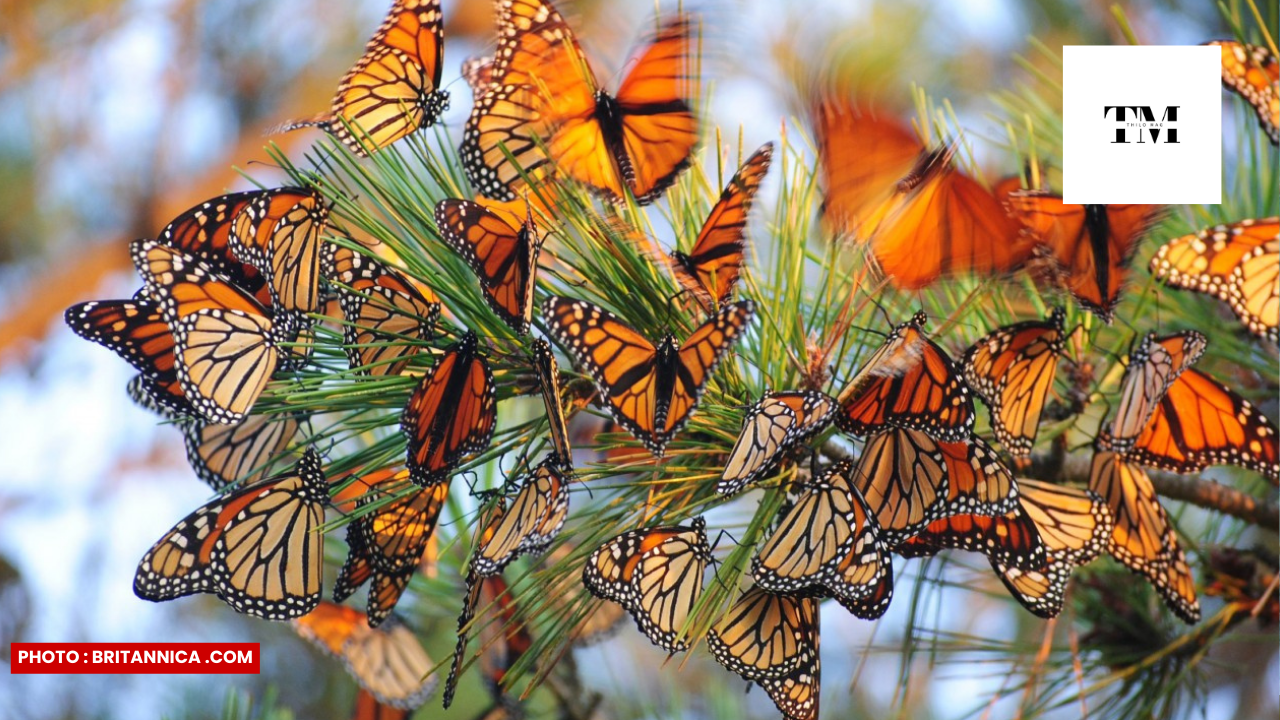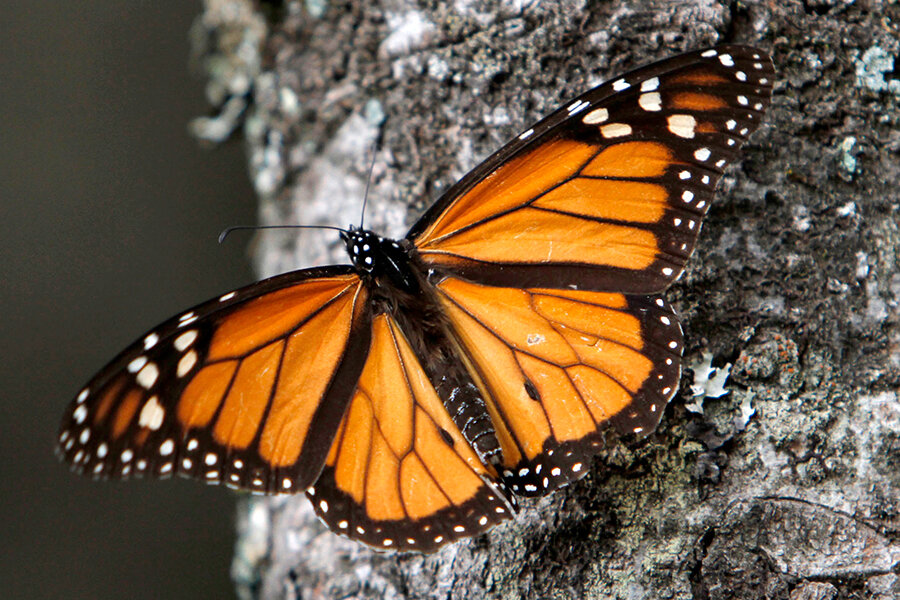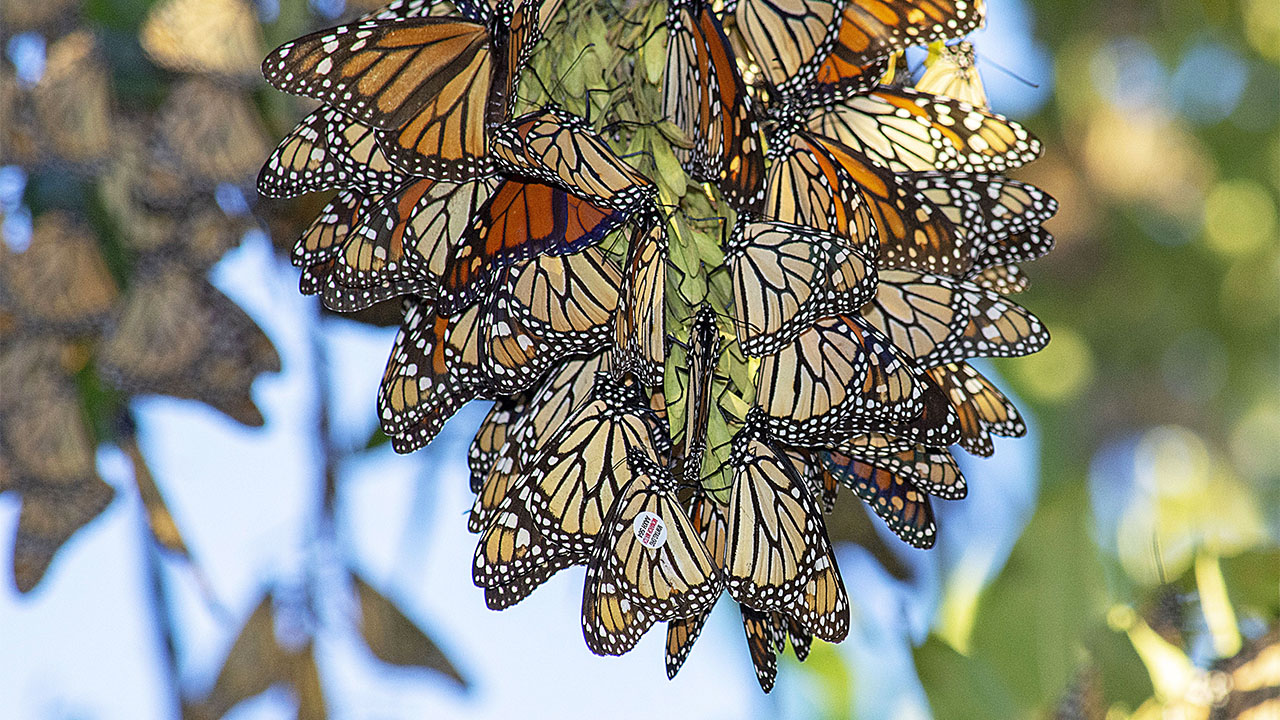The Migrating Monarch Butterflies of North America: A Journey of Remarkable Resilience
By Thiloththama Jayasinghe


Monarch butterflies, known for their striking orange and black wings, embark on one of the most incredible migration journeys in the animal kingdom. Every year, millions of these delicate creatures travel thousands of miles from North America to central Mexico, seeking refuge in the forested highlands where the climate offers sanctuary during the harsh winter months. This long-distance migration, spanning across continents, is a tale of resilience, survival, and the marvels of nature.
A Phenomenal Migration
The migration of the monarch butterfly is nothing short of extraordinary. Monarchs are not born with the knowledge of the route they must take. Instead, it is a learned behavior passed down through generations, a true testament to the instinctual power of nature. The butterflies follow a precise, seasonal route that spans up to 3,000 miles from their breeding grounds in Canada and the northern United States to their overwintering sites in Mexico.
The journey is arduous, lasting up to two months, and during this time, the butterflies face numerous challenges such as adverse weather, predators, and the sheer physical toll of migration. Yet, monarchs are equipped with specialized wings that help them glide across vast distances, taking advantage of favorable winds and thermal currents.
The Overwintering Sites
In the highlands of central Mexico, specifically in the states of Michoacán and Estado de México, the monarch butterflies gather in massive clusters, sometimes covering entire trees. These overwintering sites are crucial to their survival, as the milder temperatures in the region protect them from the cold weather they would face further north. Here, the monarchs enter a state of dormancy, conserving their energy while they wait for the arrival of spring.
These winter colonies are located in forested regions with a specific microclimate that provides the ideal conditions for the butterflies to survive. The millions of monarchs that cluster together create a mesmerizing sight, with their wings shimmering in the sunlight. The sanctity of these forests is so important that they have been designated as UNESCO World Heritage Sites to protect the migrating monarch population.

The Return Journey
In the spring, as temperatures rise, the monarchs begin their return journey north. During this time, they mate and lay eggs on milkweed plants—the only plants on which monarch larvae can feed. Remarkably, the monarchs that undertake the journey south do not live long enough to return north. Instead, the return trip is made by successive generations, each one following the path set by their ancestors.
The return migration is equally perilous, with many obstacles along the way, but it is an essential part of the life cycle of the monarch butterfly. By the time they reach their breeding grounds in the northern United States and Canada, new generations of monarchs are born, continuing the cycle that has been repeated for millennia.
A Dwindling Population
While the monarch butterfly migration is a natural wonder, it is also facing growing threats. Habitat destruction, climate change, and the widespread use of pesticides have led to a significant decline in monarch populations in recent years. Milkweed, the crucial plant for monarch larvae, is being eradicated in many areas due to agricultural practices, and climate shifts affect the timing of migration and the availability of resources.
Conservation efforts are underway, with organizations and governments working to protect the monarch’s natural habitats and ensure the survival of this remarkable species. In the U.S., programs aimed at planting more milkweed and creating butterfly-friendly habitats are becoming more common, helping to support the monarch population.
The Future of the Monarchs
As we look to the future of monarch butterflies, it’s clear that we have a responsibility to protect the fragile ecosystems that support their migration. By raising awareness about the importance of preserving natural habitats, reducing pesticide use, and supporting conservation efforts, we can help ensure that the monarch butterflies continue to make their extraordinary journey across North America for generations to come.
The migration of the monarch butterfly is not just a natural phenomenon; it’s a symbol of the delicate balance of life on our planet. This tiny creature’s remarkable journey is a reminder of the interconnectedness of all living beings and the importance of preserving the natural world.

